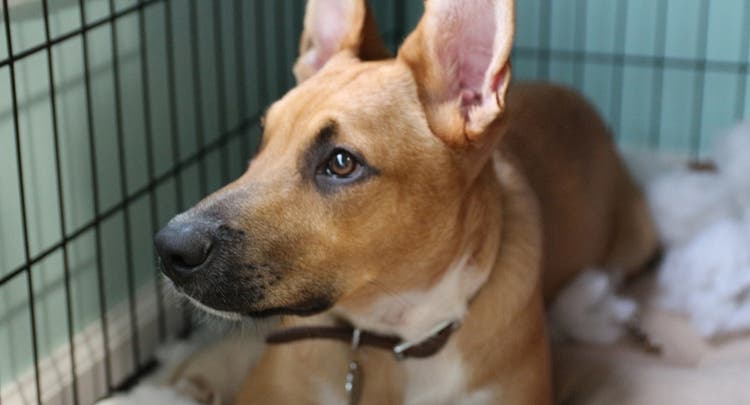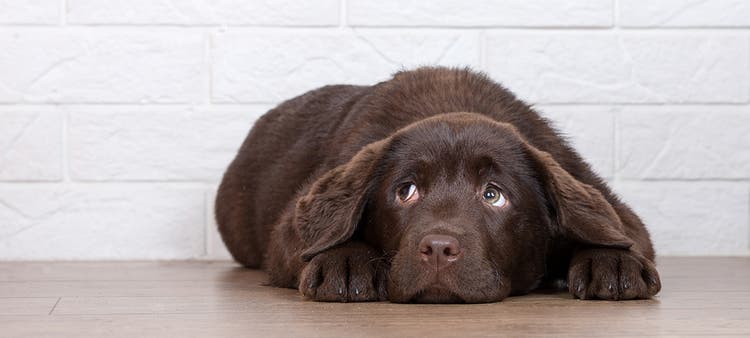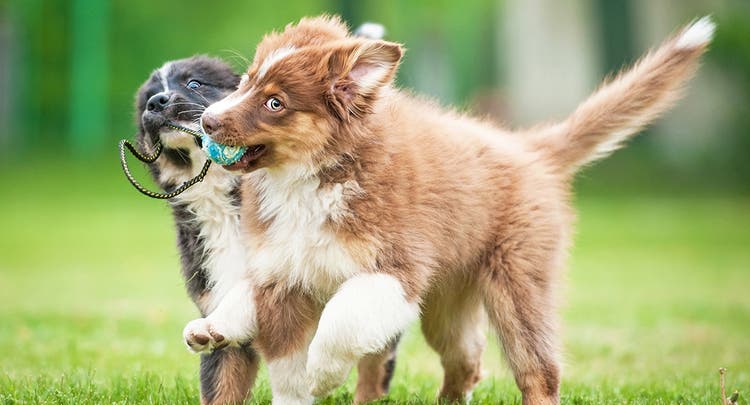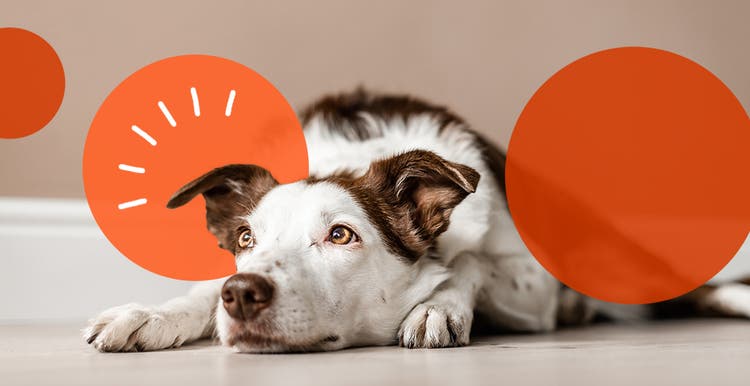5 ways to relieve dog anxiety.
While we may think of dogs as happy-go-lucky, cheerful companions, pups can experience anxiety, just like humans. Some dogs only need a little time to work through their anxiety, but other dogs might need help. By learning the causes and symptoms of dog anxiety, and ways to provide some relief, you can help your pet get back to playing fetch and learning new tricks.
What Causes Anxiety in Dogs?
Dog anxiety has three primary causes: loneliness, fear and aging — or any combination of the three.
Loneliness-based causes may include:
- Being left alone (separation anxiety)
- Not being near the "pack leader," even if other people/animals are home
- Associating certain places with being alone (such as a car, room or cage)
Fear-based causes could include:
- A surprisingly loud noise, such as fireworks, a car starting or any loud bang
- A strange object that looks threatening out of context, like an umbrella or air pump
- A sudden change in the environment, such as introducing a new puppy or dog to the household
If your dog's anxiety is triggered when they're alone, explore our comprehensive guide to separation anxiety in dogs.
Signs of Anxiety in Dogs
All dogs are different, including the way they process complicated emotions such as anxiety. The following is a list of the most common symptoms of dog anxiety. These are not the only symptoms — just the most frequent. If your dog starts to behave in ways that are not on this list and you think something is wrong, see your vet to get a more in-depth analysis.
Symptoms of an anxious dog include:
- Urination or defecation in the house (after being potty trained)
- Increased aggression, most often toward other dogs
- Excessive drooling, especially when it’s not mealtime
- Excessive panting (not just in hot weather)
- Destructive chewing, especially near doors and windows
- Excessive barking
- A restless demeanor or not sitting still for more than five minutes
- Odd, compulsive behaviors (e.g., odd pacing or scratching at carpet)
Keep in mind that some of these symptoms may not be symptoms at all; they could just be your dog’s unique personality traits. Use your best judgment to decide whether your dog is truly experiencing anxiety or simply being a dog.
How to Calm an Anxious Dog
You can help to reduce a dog's anxious feelings in several ways. While there's no overnight cure, time and patience can go a long way. Each of these approaches can take four to eight weeks to be effective. If you think your dog is having more severe episodes of anxiety, make an appointment with your vet right away to determine a course of action.
1. Add More Exercise
Is your dog getting enough exercise? Increasing the amount of time your dog spends playing and exercising is a fantastic way to relieve anxiety. If you want to take it a step further, pay attention to what times of day your dog tends to be most anxious and add the extra exercise before those times. This often means playing in the morning before you leave for work; while the idea of waking up 30 minutes earlier might seem like a hassle, doing so could help your dog in the long term.
2. Provide Mental Stimulation
Try spending some one-on-one time with your dog teaching them a new trick. Mental exertion can have the same calming effect as exercise, and lonely dogs will appreciate more quality time with their owner. Other ways to add extra stimulation to your dog's day range from feeding them kibble or treats with puzzle toys to switching up your walking route to offer new sights and scents.
3. Create a Safe Space
Make sure your dog has a "safe zone" where they can calm down and feel safe and secure. This could be a crate (if your pup is crate trained), a mat, a designated room, etc. Placing items with your scent or your pet's favorite toys in this space can help calm your anxious pup and keep them occupied.
4. Maintain a Consistent Routine
Change can be hard on anyone, but especially on dogs — our pups thrive on consistency and routine. Disruptions to a dog's routine, no matter how large or small, can lead to anxiety and nervousness. Try to keep your dog's meal and walk times consistent from day to day, and if you know your schedule will change, plan ahead to help make the adjustment easier for your pup.
5. Seek Treatment
If nothing else seems to work, schedule an appointment with your veterinarian or an animal behavior specialist. They may recommend prescription or over-the-counter options, which can be effective, long-term solutions when combined with the other steps listed here. If specific events trigger your dog's anxiety (such as fireworks or loud noises), your vet might be able to prescribe an as-needed option to calm your dog’s nerves.
References
- LaForest, N. (2023, May 9). 10 Ways to Calm your Dog Naturally. PetMD. Retrieved May 10, 2024, from https://www.petmd.com/dog/general-health/how-to-calm-your-dog-naturally.
- Is Your Dog Stressed? Your Step-by-step Guide to Understanding the Signs. Rover.com. Retrieved November 23, 2021, from https://www.rover.com/blog/stressed-dogs-signs/.
- Kriss, R. (2024, February 5). Anxiety in Dogs: Signs, Symptoms, Treatment. American Kennel Club. Retrieved May 10, 2024, from https://www.akc.org/expert-advice/health/treating-dog-anxiety/.
- Miller, T. (2022, July 18). 8 Tips for Helping an Anxious Dog. The Wildest. Retrieved November 23, 2021, from https://www.thewildest.com/dog-behavior/helping-anxious-dog.








